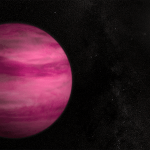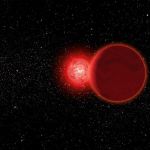
The latest in a new generation of giant telescopes broke ground
The Giant Magellan scope – 80 feet in diameter – will be ten times as precise as Hubble

The Giant Magellan scope – 80 feet in diameter – will be ten times as precise as Hubble

Take your own planetary tour and view Venus, Mars, Jupiter and Saturn, all on one night.

While we’re not finding too many “Earths”, we sure are finding some strange planets

You put your one asteroid in, you put your other asteroid in and you circle all about, you do the astro polky and turn yourself about, that’s what it’s all about!

They should probably name this planet “Solo” – what else would you name a rogue with magnetism?

‘Shake shake shake, shake shake shake, shake your mirror, shake your mirror’ (apologies to KC & the Sunshine Band)

The century’s longest lunar eclipse has people talking. We tell you why and reveal where you can watch it too. Source: The Longest Total Lunar Eclipse of the Century: Everything You Need to Know About […]

Great Filters may be responsible for our galactic “desert”

Ganymede has a magnetosphere, and it is doing unusual things.

New Tricks with Old Data reveal far more about 122 asteroids than we’ve ever known.

A call for experiment packages may be just the political boost the Europa Lander mission needs.

Eat your heart out Beowulf Shaeffer! This one is a giant!



“If we had this monster sitting at the centre of our Milky Way galaxy, it would appear 10 times brighter than a full moon. It would appear as an incredibly bright pin-point star that would almost wash out all of the stars in the sky.”

Whether a Brown Dwarf or a Super Jupiter, this stellar companion is 540 million light years away, and astronomers can see it

Dark Matter does not appear to affect star or planet formation, no matter how much or little of it there may be in different universes.

Down Under team expands the concept of the Big Ear on the cosmos

We’re still holding out a faint hope that InSight will reveal that the canals have gone underground….

exo-planets, exo-asteroids and now exo-comets. Still waiting for the exo-spaceship!

Hubble finds a star 9 BILLION light years from Earth

A March roundup, in which Amazing Stories is prominent, numerous reviews are written and film and fandom are discussed.

Programs that analyze car emissions can be used to analyze exoplanet atmospheres

Advanced Neural Networks are being trained to help identify possible life-supporting planets.

Marsbees. Swarms of bee-sized robots may be used to expand out knowledge of Mars.

An odd ‘see-thru’ galaxy may help explain our understanding of dark matter

70,000 years ago, the sky might have looked like Tattooine’s

Will we find a lone monument, aka Clarke’s The Star, when we finally get there?

NASA continues to give us hope that life might exist in the atmospheres of gas giants.

Recent Comments